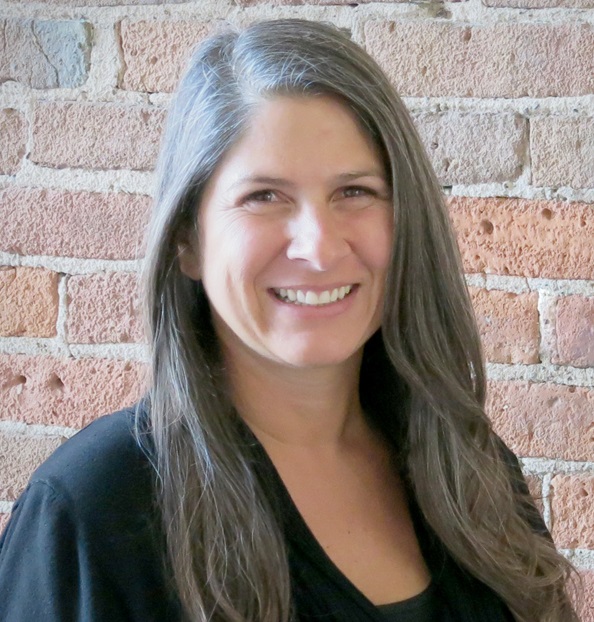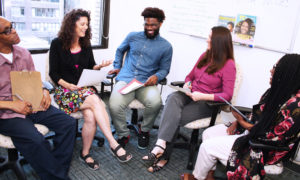 SARAWUT AIEMSINSUK/SHUTTERSTOCK
SARAWUT AIEMSINSUK/SHUTTERSTOCK
The way youth workers do their work has shifted sharply since spring. For some, this means a shift to connecting youth and their families to community resources focused on basic needs, food access and mental health supports. For others it is translating their offerings to virtual and now physically distanced, programming.
Maintaining connections with participants is challenging and reaching young people who are already disconnected from support systems is even more difficult, resulting in larger disparities in engagement. Programs that are adjusting their budgets and working to keep staff positions are making tough decisions about what line items change and what gets cut. Programs that once had a professional development budget are needing to prioritize jobs, personal protective equipment and more.
So, what does that mean for supervisors and the need for their work to shift as they look to support staff?
We know that in human development, whether considering youth or adults, there are key components that amplify the learning and development of individuals. These are the need for things like:
- physical and emotional safety
- supportive relationships
- opportunities to connect
- making connections to learning
- opportunities for building skills
- decision making and planning
- reflection
- support for self-efficacy.
The challenge
For supervisors, supporting these key components can be a struggle during “normal” times when balancing the demands of pressing daily needs and the intentionality it takes to build a culture of learning within a staff team. Supervisors are also experiencing pressures that are similar to those of their direct service staff, facing tough decisions around how to move forward in uncertain times.

Jocelyn Wiedow
Beyond the COVID-19 pandemic, our communities are facing the centurieslong pandemic of systemic racism that has risen to the surface this year in different ways. The intersection of these two pandemics intensifies the urgency for supervisors to prioritize time and space for youth workers.
And yet, having a major shakeup in how we do our work can be an opportunity. We are experiencing something that is new for many of us. There isn’t a roadmap for how to run a youth program during a pandemic. Our program structures and logic models don’t fit the same way, giving us an opportunity to experiment and innovate.
Foster a culture of learning
So, what do our supervisor practices look like right now? The answer is not new. These are the same things we know from effective practices in creating a culture of learning. The urgency now is to recognize that things aren’t going back to how they were before, take a breath, settle in and plan for what things will look like moving forward in this new space.
What is already in place? What could use more intentionality? Whether we are thinking about our young people as learners or our staff as learners, we tap into the same effective practices. Embedding these practices into our supervisor responsibilities models for staff how to adapt their youth work practices to virtual or physical distancing environments.
Put learners at the center: Create authentic opportunities to participate and engage. This requires reimagining what it looks like to collaborate, share and connect in online settings. There are so many platforms, apps and resources that can provide engaged learning spaces for young people in distance learning as well as in person.
Build community: Take time to strengthen your staff team’s sense of community. This has always been important but as staff teams work together over time and get bogged down in the day to day, the structured time to build community can get pushed aside. Whether staff are working from home or working on site with physical distance protocol in place, there is an increased need for space to connect, process and create mutual support among staff members.
Lead as facilitators of the learning, not as experts: This is always a good practice but more so now as the playing field of knowledge and experience has been leveled. A veteran supervisor is learning right alongside new staff.
Embracing this opportunity to engage everyone in the learning, experimenting and sharing knowledge provides purpose and investment in ways that may not have existed before. This also models how to create space for a group to provide input and planning as well as opportunities to lead and mentor. Again, the practices we know are good for young people are the practices that we can lean into now even more with our staff teams in a way that strengthens our team engagement and investment.
Model Imperfection
Mistakes are going to happen. Technology gets glitchy. The icebreakers we are experts in leading in person may feel clumsy as we reinvent them in virtual ways. As a supervisor, model that this work is not always perfect as we try new things. Point out the opportunity to model imperfection as a strategy staff can model and articulate with young people. Trying new things and experimenting is the first step, then learn, revise and try again.
Building regular reflection into your schedule is more important now than ever. Especially as many staff teams aren’t working in close proximity where the informal opportunities to connect and reflect may typically happen.
Reflect on program structure and innovations. In youth work we know that continuous program improvement (CPI) is important. We look at data, reflect, celebrate what is working, adjust where we want to improve. Your traditional program or logic model may not fit right now.
As you innovate and experiment in these new ways, take time to debrief and reflect with staff. What is working and what is not? What supports or adjustments are needed? What are our young people and families saying they need? Now is the time for flexibility and responsiveness supported by team input. When we experiment, we are trying something new. We may have a hypothesis about how it will work, but it isn’t until we try it out, reflect and iterate that we can get to something new that works.
Lastly, but most importantly, take time with staff on wellbeing. Just as youth workers are checking in and supporting community around basic needs for physical and emotional safety during this time, staff need space for this too. They may be figuring out how to support their own children through virtual or hybrid learning and feeling overwhelmed with navigating these new ways of doing things. They may have loved ones who are battling COVID-19, worried for their health and trying to survive the economic hardships.
They may be experiencing varied levels of trauma, anger and frustration with the hopes for change to come out of the civil unrest in their own communities. In all of the key ways our young people and families need support, so too do our staff.
Take time for you too. Don’t forget while you are supporting others that you need and deserve these things too. Some supervisors may find that space alongside their staff but that doesn’t work for everyone. Be sure to seek out your own supports and confidants so you too are getting what you need to show up as your best self.
Jocelyn Wiedow is the network and quality coordinator for Sprockets, a citywide out-of-school time intermediary in St. Paul, Minnesota. Jocelyn melds her experience and knowledge of the OST field to support youth workers to strengthen skills and use data to inform improvement within their programs.





























